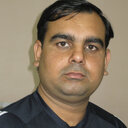Clinical and biochemical profile of dengue haemorrhagic fever in children in Delhi.
Palavras-chave
Resumo
The clinical and biochemical profile of dengue haemorrhagic fever (DHF) varies from epidemic to epidemic. We studied children hospitalized with DHF from September 2003 to December 2003. All were diagnosed, managed and monitored according to a standard protocol. Of the 34 who fulfilled the World Health Organization criteria of DHF, 22 (64.6%) were male. All patients presented with fever and hepatomegaly. Examination also revealed splenomegaly in 11 (32.4%), ascites in 6 (17.6%) and pleural effusion in 3 (8.8%). Common bleeding manifestations were positive tourniquet test in 22 (64.7%) and epistaxis in eight (23.5%). Most children had a platelet count of between 20,000/mm(3) and 50,000/mm(3) (56%). Bleeding manifestations were not related to platelet count (P > 0.05). Serum glutamic pyruvic transaminase (SGPT) >40 IU/L was seen in 22 (64.6%) patients, alkaline phosphate (ALP) >400 IU/L in 12 (35.3%) and serum bilirubin >1 mg% in 3 (8.8%). IgM dengue serology was positive in 68.5% cases. There was no significant difference in liver function tests with age or sex (P > 0.05). Clinical features of DHF varied from the previous epidemic. Hepatic dysfunction with increased levels of serum enzymes was common in DHF.



